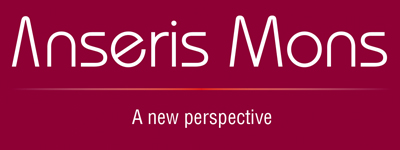We are living in an ‘always-on’ society. With constant 24 hour news coverage and with our mobile phones and tablets held firmly in our hands we are always checking the latest emails, social media posts and news updates. We don’t want to miss anything and because of this our business lives can go way past the traditional hours and infiltrate our personal lives. Checking our phones during meal times for work emails is common place as is responding to those emails well into the evening. New technology and social media has changed the way we work and demands on our attention have become so challenging that we hardly ever take a pause for reflection and examine what we can achieve right now.
This is what attending to the present moment will help you to address. In practical philosophy there is much to be learned from the 4 states of attention – Scattered, Captured, Centred and Open. Scattered is where many business owners find themselves. Scattered is when we are diverted by too much stimuli, too many tasks and unfinished jobs. It is the state of mind where we find ourselves unproductive, achieving very little and being left with a plethora of uncompleted tasks.
Captured is when we are focused too much on a specific task and are oblivious to the other tasks and even people around us. This is when we can lose sight of what we are trying to achieve.
Centred is also about focus but not to the point of obsession. Being centred is about understanding your goal, what affects it and having the wherewithal to deal with it whilst not losing awareness of the bigger picture and those around you.
Open is the ideal state of mind to have. This is when you are open to the stimuli around you, are able to respond appropriately to it and you have the presence of mind to apply the correct amount of attention to the issue at hand.
You will probably be able to identify yourself and the people you work with in the descriptions above.

Centred and open is clearly where we all want to be but how easy is this to achieve?
Well, it’s something that you need to work at. Attending to the present moment and being mindful in your business means that you need to take time to pause, reflect and meditate on your work life situation. In business it is very easy to re-enact past events, rehearse for future ones but lose focus on what’s happening currently. If you can train your minds to be aware of the present and reflective about the past, then you are well placed to make better decisions about the future.
Attending to the present moment and being mindful in your business can help to reduce workplace tensions, improve communication and reduce stress. Studies have shown that workplace conflicts can be handled more smoothly, teamwork is boosted and relationships between managers and staff can improve.
Cultivating the right state of mind
In an increasingly competitive market where change is constantly happening, we all need to be more focused and ready to respond. Having the ability to attend to the present moment will give you new ways of listening, leading, innovating and responding to what’s happening now. By cultivating this state of mind across your teams there is an opportunity for greater openness, focus and improved relationships. Surely this can only be a good thing?
What are your thoughts? What distractions stop you from attending to the present moment?
“Because of my blindness, I had developed a new faculty. Strictly speaking, all of us have it, but almost all forget to use it. That faculty is attention. In order to live without eyes it is necessary to be very attentive, to remain hour after hour in a state of wakefulness, of receptiveness and activity. Indeed, attention is not simply a virtue of intelligence or the result of education, and something one can easily do without. It is a state without which we shall never be able to perfect ourselves. In its truest sense, it is the listening post of the universe. (From ‘The Blind in Society’ by Jacques Lusseyran)
Zeeshan Masood, Anseris Mons Limited
To read my other blogs on ‘Business and Practical Philosophy’ please follow the links below.

